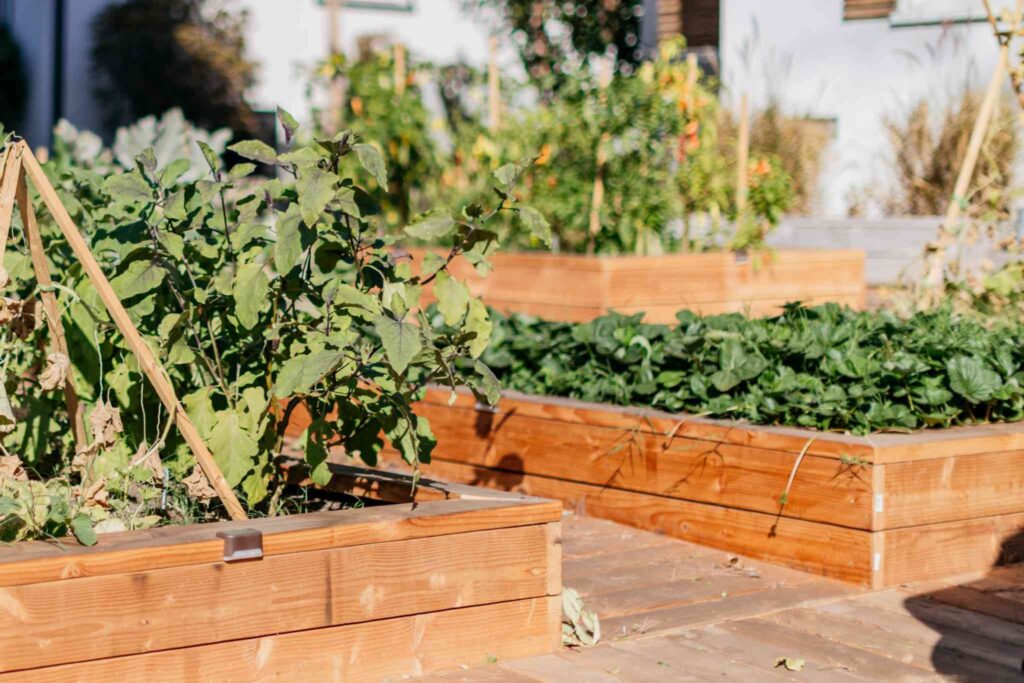Gardeners often run into the same problems: dry soil, uneven watering, and wilting plants. These are especially common in small spaces or for people with busy schedules. A great solution is a garden planter box paired with a self watering planter box system.
This setup simplifies plant care, reduces water waste, and improves plant health. Let’s look at how these systems work, why they’re helpful, and what to keep in mind when setting one up.
What Is a Self-Watering Planter?
A self-watering planter box is a container with a built-in water reservoir. The design allows plants to absorb moisture as needed through capillary action, rather than relying on surface watering.
The basic components include:
- A planting area filled with soil
- A hidden reservoir beneath the soil
- A wicking system (sometimes a fabric strip or specially designed channel)
- A fill tube for topping off water
- An overflow hole to prevent flooding
This system keeps the soil at a consistent moisture level, so plants get the water they need without becoming waterlogged.
Why Choose a Self-Watering Garden Planter Box?
Using a garden planter box with a self-watering function has several key benefits:
- Reduces watering frequency: Perfect for people who travel or forget to water regularly.
- Promotes root health: Water is delivered from the bottom, encouraging deeper root growth.
- Prevents overwatering: The overflow valve helps drain excess water, protecting plant roots.
- Saves water: Less evaporation means more efficient use of water.
- Cleaner setup: No dripping or runoff that can stain patios or balconies.
These planters are great for herbs, leafy greens, flowers, and even some small vegetables. They are also ideal for raised setups or balcony gardens.
Best Uses for Self-Watering Garden Planters
You can place these planters in various settings:
- Urban balconies: Where watering with a hose is inconvenient
- Patios and decks: Keeps surfaces dry and tidy
- Kitchen gardens: Easy access to herbs and greens
- Schools or offices: Reduces maintenance needs
They work well indoors and outdoors, offering flexibility based on your space and sunlight availability.
Choosing the Right Garden Planter Box
It is essential to choose a planter box that is right for your needs and available space. When shopping, look for:
- Durability: Galvanized metal, recycled plastic, or UV-resistant materials hold up well outside.
- Size: Consider what you’re growing. Shallow boxes are fine for herbs; deeper boxes work better for root vegetables.
- Design: Clean lines or natural finishes can match outdoor decor.
- Portability: Wheels or handles make it easier to move planters with the seasons.
Some garden planter boxes come with built-in self-watering systems. Others require separate inserts or DIY modifications. Kits are also available for retrofitting existing planters.
Tips for Getting Started
Here’s how to make the most of your new self-watering garden setup:
- Fill the reservoir first: Before planting, top off the water reservoir. Use the fill tube until water comes out of the overflow hole.
- Choose the right soil: Use lightweight potting mix. Avoid heavy garden soil, which can block the wicking system.
- Monitor the water level: Check the fill tube every few days, especially in hot weather.
- Don’t overplant: Leave space between plants to avoid overcrowding, which affects airflow and water access.
- Use mulch: A layer of mulch can reduce evaporation from the soil surface.
These steps help maintain consistent moisture and reduce problems like root rot or fungus.
Seasonal Considerations
- In summer: Check your water levels more often as planters dry out faster in high heat.
- In winter: If using outdoors, choose frost-resistant materials and empty the reservoir to avoid freezing damage.
- During rain: Rely on the overflow hole to drain excess water naturally.
With the right planter and a bit of planning, your garden can thrive across the seasons.
Final Thoughts
A self-watering planter and a well-designed garden planter box can take the stress out of gardening. These systems offer an innovative, low-effort way to grow herbs, vegetables, and flowers in any space. For gardeners who want healthy plants without daily maintenance, it’s a simple upgrade with long-term payoffs. Whether you’re new to gardening or looking to streamline your current setup, this combo makes it easy to grow more with less effort.

